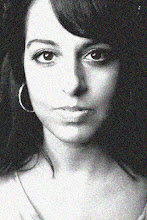I suppose we all start out as self taught: we begin drawing and painting and poking around in great delight and then the interest takes over and our obsessive, all-consuming interest in art leads to all sorts of visual comparisons and analysis which only present us with endless questions. So then we find ourselves standing outside the school yard and we are 17 or 18 years old and no longer children playing but not really ripened artists so we continue with art school. And when we really, really just cannot get enough, we sign on for grad school and then find ourselves with a formal education which takes on a language all its own. This formalism has actually provided a key to visual language and served as a passport through time and cultures. I certainly value the formal education I received at U.C.L.A. and at the Royal College of Art in London. Yet, truth be told, I have a fondness for the very private art of childhood.
My work has always been figurative as it has addressed individual experience, family dynamics, and contemporary culture. With a reduced palette, color is often used symbolically. The manipulation of the figure and the gesture are at the service of the narrative. These elements lead to an abstracted figuration both emotionally charged and compositionally minimal.
For the presence of the figure, for the engagement and confrontation, the scale of life- or near-life size figures on canvas demand a size which occupies the room. Yet, I love the direct touch of the hand drawing on paper or cloth. I do mix media when drawing; however, oil paint seems to ooze out of the tube whether I am painting on canvas or drawing on paper. I love being in the layer of paint, feeling the pigment in suspension.
I came to art as a child or rather it came to me. Probably a common thread for many who drew and painted and made things from an early point in their lives would be a strong degree of social isolation or dislocation. That which served as a pivital event in my life was moving to Austria and being culturally and linguistically displaced. Art replaces the world with a parallel universe in which we have a sense of control, where we regain our voice.
We speak of art and learning to see. This vision is not just about the appearance of light, space, and form. Art has brought me awareness, it has made me visually literate and enabled me to read, to understand that which is before me. There are beauty and rhythms and harmonies and then there is also meaning spread before the eyes. The gift of seeing might well be what I treasure most.
Film projected in a dark theater has always been the most powerful and seductive medium in my experience. Unfortunately, it also demands the most endurance as well as collaborative and patient spirit. So I was never a candidate for filmmaking.
Putting work together for exhibitions is always like planning a fun party: deciding who should sit next to whom, listening to the various dialogues unfold, and then afterwards, when everyone has gone home, discovering sometimes that those paintings just did not really behave the way we had expected or that maybe we underestimated the grace of one or another.
All of my painting clothes - jeans, t-shirts, sweaters - are worn until they are stiff enough to walk away from me. Then they are called into further service as painting rags.
Quite clearly the most frustrating part of being an artist is the lack of space. Ask anyone. No one would decline an extra thousand square feet, no one would say they could give up a square inch.
I devoted a fair number of early paintings to food issues.
There were only two sandwiches: peanut butter or tuna. In six years of school cafeterias that adds up to an intimate association.
The biggest change of the year has been smaller: after a decade of New Year's resolutions to paint smaller, I actually spent the past year working on some very small canvases. Of course the irony in this undertaking has been that these tiny ten - inch paintings have two or three figures or boats and lake and forests. They also have a wonderful sense of freedom and a complete lack of preciousness.
As a teenager I worshipped at the alter of Matisse. I also loved the paintings of Vuillard and paintings and graphic work of Ensor. I felt the need to distance myself from Matisse as a freshly minted artist. But as one well seasoned, it is comforting to know that the triad of painters I looked to forty-five years ago still holds me.
There is often an early experience which is stronger than any we ever know again. For me it was entering the Accademia in Florence and seeing Michelanglo's unfinished slaves. I was nine years old and I bought postcards from which I began drawing when I returned home. That was the beginning of the self-taught stage. But of course, even in this “self-taught “ stage, I had quite a master leading the way.
Two very exciting group exhibitions have just opened on tour:
The Seduction of Duchamp at the Art Museum of Los Gatos through October 22 and Banned & Recovered ---- Artists Intervention at the Reese Bullen Gallery at Humboldt State University through November 6th
Both were curated by Hanna Regev and it has been a pleasure participating in these projects.
I have exhibitions planned for Berlin and Los Angeles in the coming months so I suppose I should have said a most cherished aspect of art has been the way it has allowed me to participate in these many communities.
Wednesday, September 29, 2010
Subscribe to:
Post Comments (Atom)











No comments:
Post a Comment